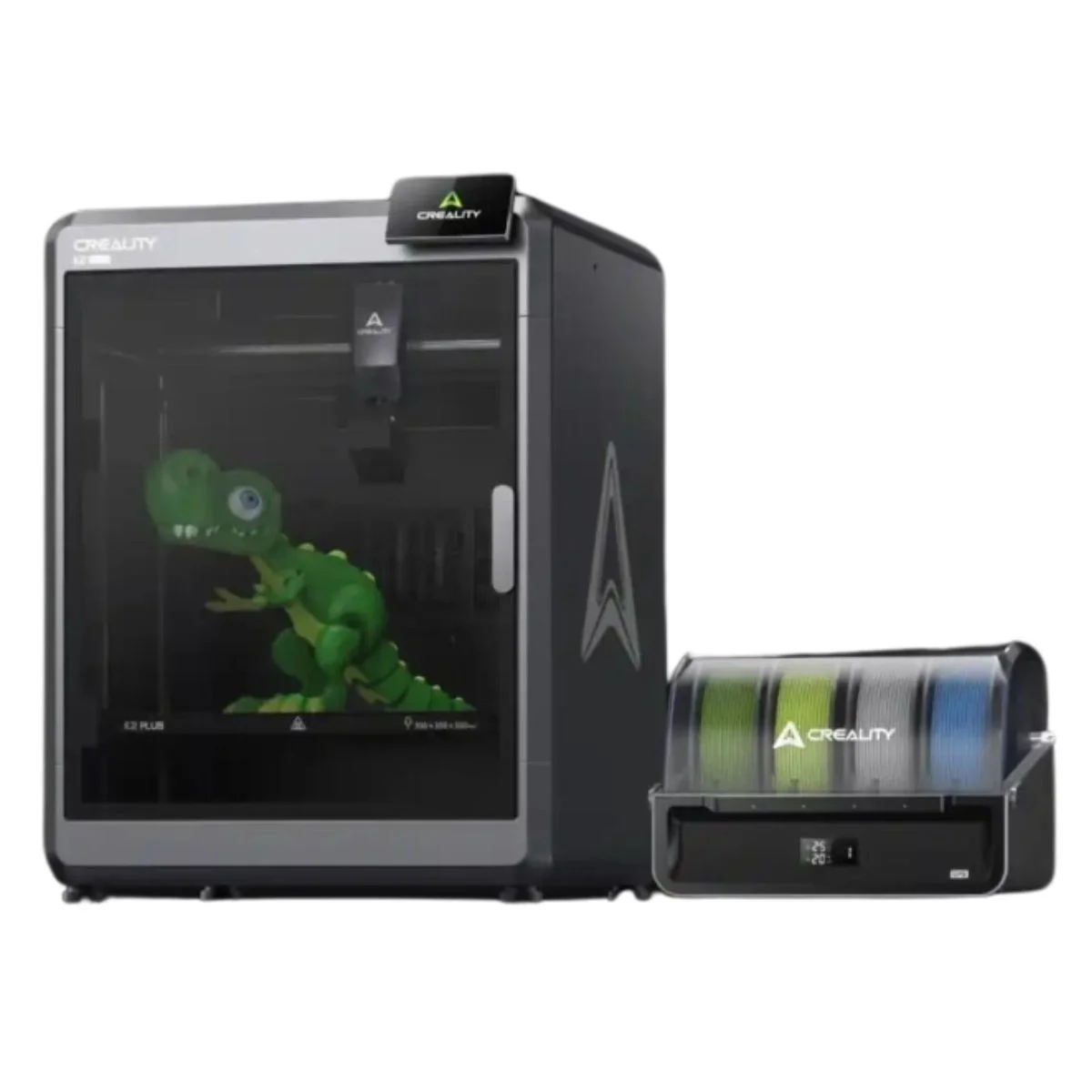Compare K2 Plus vs K1 Max
Comparison between the best 3D printers
Choose the best 3D printer at the best price. The cheapest 3D printers are here.
Buy a 3D printer here with 3D Fila.
 |
 |
|
| Model | K2 Plus[BUY K2 Plus] |
K1 Max[BUY K1 Max] |
| Printing Material | Filament | Filament |
| Buy Filament for Creality K2 Plus | Buy Filament forCreality 3D K1 Max | |
| Estimated price | $1500,00 | $1300,00 |
| Manufacturer | Creality | Creality 3D |
| Release Year | 2024 | 2023 |
| Print Volume [mm] | 350x350x350 | 300x300x300 |
| Printer Size [mm] | 495x515x640 | 435x462x526 |
| Weight [kg] | 33,5 | 18 |
| Power Loss Recovery | YES | YES |
| Enclosed printer | YES | YES |
| Bed Leveling | Automatic | Automatic |
| Filament End Sensor | YES | YES |
| Bed type | Heated | Heated |
| Power supply system | Direct Drive | Direct Drive |
| Standard nozzle | 0,4 | 0,4 |
| Maximum Nozzle Temperature [°C] | 350 | 300 |
| Maximum Bed Temperature [°C] | 120 | 100 |
| Maximum printing speed [mm/s] | 600 | 600 |
| Filament holder | YES | YES |
| Camera for supervision | YES | YES |
| Recommended filaments | PLA, PETG, PET, TPU, PA, ASA, PC, PLA CE, PA-CF, PET-CF | ABS, PLA, PETG, TPU, PA, ASA, PC, PLA-CF, PA-CF, PET-CF |
| Recommended slicers | Creality Print 5, Bambu Studio, Super Slicer, Cura, Prusa Slicer, Orca Slicer | Creality Print, Cura, Simplify, Slic3r, IdeaMaker e outros |
| Maximum Resolution [mm] | 0,1 | 0,1 |
| Processor | ||
| Display | Touchscreen 4,3'' | Display touchscreen 4,3'' |
| Power Supply | 1200 W | |
| Connectivity | USB / WIfi | USB / Wi-Fi / Ethernet |
| Operating systems | Windows, Linux, Macbook | Windows, Mac, Linux |
| Date of registration in the system | 2024-06-26 | 2023-12-01 |
| Release date | 2024 | 2023 |
| Extra features | The Creality K2 Plus 3D Printer stands out for its multicolor printing, large build volume (350x350x350 mm) and Apus Direct Drive extruder with tri-metal protection nozzle. It features automatic anti-tilt leveling, FOC closed-loop motors and active chamber heating. In addition, it has an intelligent CFS filament management system, cameras for calibration and monitoring, a 4.3-inch touchscreen and advanced sensors to optimize the printing process. | The Creality K1 Max stands out as a fast Core XY 3D printer with a large build volume of 300 x 300 x 300 mm. It is fully enclosed and equipped with AI sensors to prevent print failures. This model has a smooth and flexible PEI build platform, and uses an automatic leveling system with LIDAR, as well as a filament run-out sensor. LAN, Creality Cloud and USB Flash Disk connectivity are available, as well as a 4.3-inch touchscreen interface. The K1 Max is robust, weighing in at 18 kg, and includes an AI camera and limited version of the Klipper firmware. Its motion system is solid and the printer is efficient with high-temperature filaments, but it is not silent. Assembly is 99% complete, requiring only minor adjustments before use. |
| Support for multiple colors and materials (AMS and CFS) | YES | NO |
Notes * |
||
| Cost-benefit | 7 / 10 | 7 / 10 |
| Hardware | 7.2 / 10 | 4.8 / 10 |
| Tela | . | . |
| Print volume | 4 / 10 | 4 / 10 |
| Performance | 5 / 10 | 5 / 10 |
| [BUY K2 Plus] | [BUY K1 Max] |
Conclusion |
| In conclusion, both the Creality K2 Plus and the K1 Max 3D printers offer impressive features and performance, catering to different user needs. The K2 Plus excels with its larger print volume, advanced multicolor capabilities, and superior maximum nozzle and bed temperatures, making it a strong option for those who prioritize versatility and high-quality prints with a variety of materials. Its extensive set of features, including a sophisticated filament management system and superior build quality, positions it well for users looking for a more robust machine. On the other hand, the K1 Max offers a competitive and slightly more affordable option with solid functionalities, including a reliable AI-driven print monitoring system and good connectivity options. While it has a slightly smaller build volume, it is designed for efficiency and quick setups due to its mostly pre-assembled state. Price consideration suggests that while both printers score similarly in cost-benefit, the K2 Plus may justify its higher price with enhanced features and capabilities. Ultimately, choosing between the two will depend on specific printing needs, desired material compatibility, and budget constraints, but both models successfully deliver on performance and reliability. |

